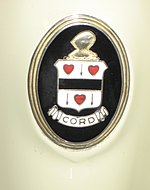Packard Automotive Plant
1911 establishments in Michigan1958 disestablishments in MichiganAlbert Kahn (architect) buildingsBuildings and structures demolished in 2023Former motor vehicle assembly plants ... and 8 more
Industrial buildings and structures in DetroitIndustrial buildings completed in 1911Mill architectureModern ruinsMotor vehicle assembly plants in MichiganPackardUnused buildings in DetroitUse mdy dates from July 2013

The Packard Automotive Plant was an automobile-manufacturing factory in Detroit, Michigan, where luxury cars were made by the Packard Motor Car Company and later by the Studebaker-Packard Corporation. Demolition began on building 21 on October 27, 2022, and a second round of demolition began on building 28 on January 24, 2023, which was wrapped up by April 1st, however all demolition efforts by the City of Detroit halted, which stopped finishing demolition work of building 21. The Packard Plant currently sits empty and partially demolished, with many parcels still remaining.
Excerpt from the Wikipedia article Packard Automotive Plant (License: CC BY-SA 3.0, Authors, Images).Packard Automotive Plant
Harper Avenue, Detroit
Geographical coordinates (GPS) Address External links Nearby Places Show on map
Geographical coordinates (GPS)
| Latitude | Longitude |
|---|---|
| N 42.379616666667 ° | E -83.028927777778 ° |
Address
Packard Automotive Plant
Harper Avenue
48211 Detroit
Michigan, United States
Open on Google Maps





